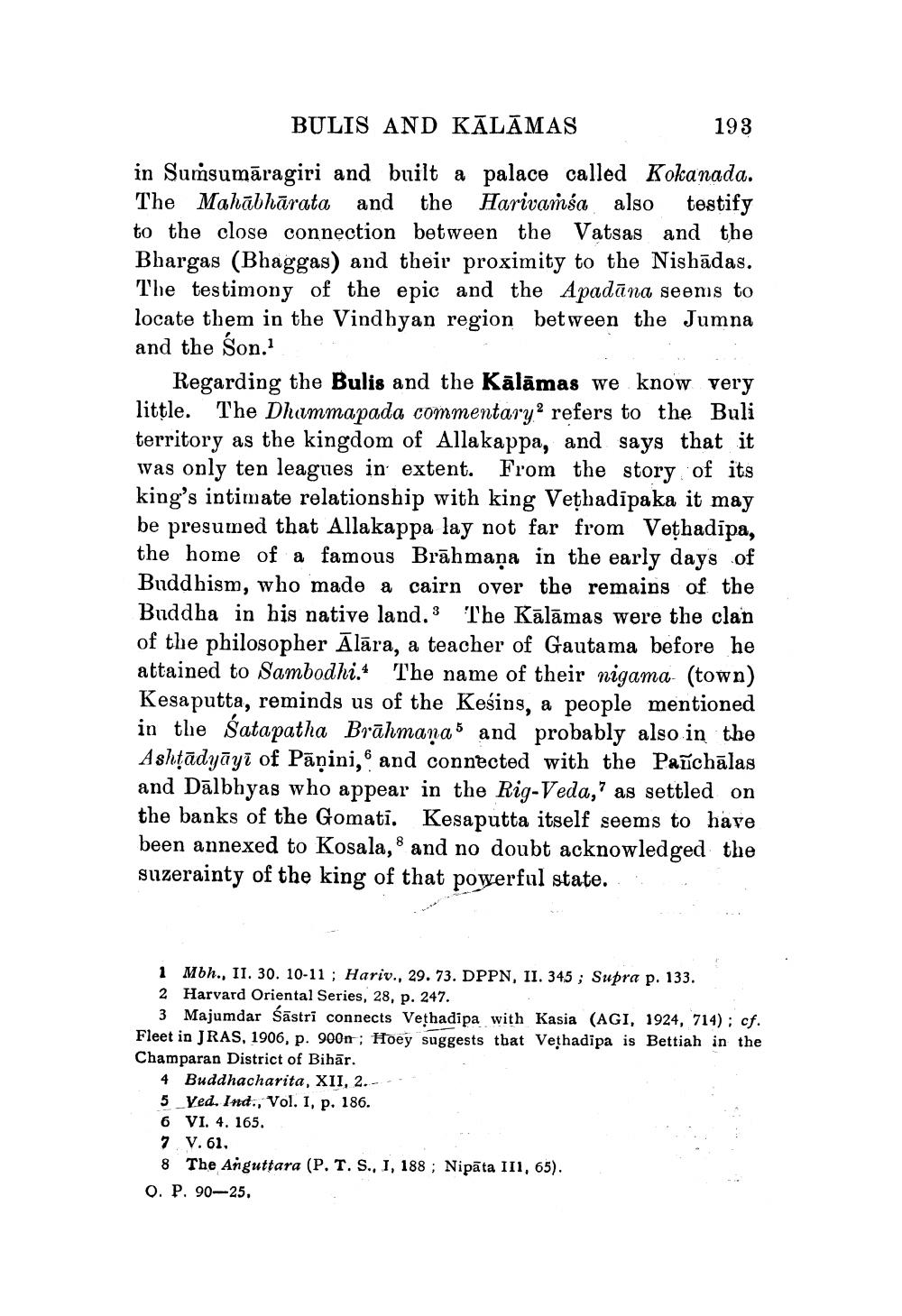________________
BULIS AND KĀLĀMAS
193
in Sumsumāragiri and built a palace called Kokanada. The Mahābhārata and the Harivamsa also testify to the close connection between the Vatsas and the Bhargas (Bhaggas) and their proximity to the Nishādas. The testimony of the epic and the Apadāna seems to locate them in the Vindhyan region between the Jumna and the Son.
Regarding the Bulis and the Kālāmas we know very little. The Dhammapada commentary” refers to the Buli territory as the kingdom of Allakappa, and says that it was only ten leagues in extent. From the story of its king's intimate relationship with king Vethadipaka it may be presumed that Allakappa lay not far from Vethadīpa, the home of a famous Brāhmaṇa in the early days of Buddhism, who made a cairn over the remains of the Buddha in his native land. The Kālāmas were the clan of the philosopher Ālāra, a teacher of Gautama before he attained to Sambodhi. The name of their nigama (town) Kesaputta, reminds us of the Keśins, a people mentioned in the Satapatha Brāhmanas and probably also in the Ashtādyāyī of Pāṇini, and connected with the Pañchālas and Dālbhyas who appear in the Rig-Veda," as settled on the banks of the Gomati. Kesaputta itself seems to have been annexed to Kosala, 8 and no doubt acknowledged the suzerainty of the king of that powerful state.
1 Mbh., 11. 30. 10-11; Hariv., 29. 73. DPPN, II. 345 ; Supra p. 133. 2 Harvard Oriental Series, 28, p. 247.
3 Majumdar Šāstri connects Vethadipa with Kasia (AGI, 1924, 714) : cf. Fleet in JRAS, 1906, p. 900n : Hoey suggests that Vethadipa is Bettiah in the Champaran District of Bihār.
4 Buddhacharita, XII, 2.-- 5 Yed. Ind., Vol. I, p. 186. 6 VI. 4. 165. 7 V. 61, 8 The Anguttara (P. T. S., 1, 188 ; Nipāta II1, 65). 0. P. 90—25.




